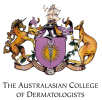Clients may decide to have rhinoplasty for any number of reasons
Perhaps they have always hated the size or shape of their nose. Maybe they suffer from snoring or sleep apnea due to a deviated septum or blocked nasal passages. Sometimes they may have suffered a traumatic injury that has left the nose scarred and misshapen.
You have no doubt read articles on all kinds of reasons for plastic surgery, including rhinoplasty. The simple fact is, whether your reasons are cosmetic, functional, or both – so long as you are seeking rhinoplasty for yourself and not to satisfy anyone else – you are perfectly justified in seeking this procedure. It is safe and patients who pay attention to their doctors’ consultations and advice will be very satisfied with the outcome.
While you may have a good idea of what you want your new nose to look like, or how you want it to function, you may not have a clear picture in your mind of how this can happen. In this article, we will discuss the basic steps your rhinoplasty surgeon will take during your procedure and what you can expect during recovery.
What happens during the procedure
Depending on the type of surgery and whether or not you are having any other procedures done at the same time – such as jaw contouring or a brow lift – your rhinoplasty will most likely take between 1 and 3 hours. You, of course, will not be awake during this process, as you will be given an IV of anesthesia, fluids, and medication as you are taken into the operating room. Your heart rate, blood pressure etc will then be closely monitored by your anesthetist.
While you are under anesthetic, your surgeon will either perform an open or closed rhinoplasty. In an open rhinoplasty, your surgeon will make a small Z-shaped incision under your nose, between your nostrils. During this type of procedure, the skin is folded up while your surgeon reshapes and restructures the bone, cartilage, and tissue underneath. Afterward, you may be left with a very discrete scar in between your nostrils.
During a closed rhinoplasty, all of the incisions will be made inside the nostrils. In this procedure visible scarring can be avoided. Some surgeons will often prefer this method of the procedure as it enables them to see how the nose will look after the surgery is complete. However, closed rhinoplasty does make repositioning of the skin over the nose more difficult and if often not recommended for more complex surgeries.
Both of these techniques have advantages and disadvantages, depending on the desired results for the procedure. Talk to your surgeon about which will be better for you.
What to expect after surgery
Rhinoplasty often includes breaking and reshaping the bones in your nose. When you take this into consideration, it is understandable that the recovery process is similar to recovering from a broken nose. After your procedure, your surgeon will cast and tape your nose to hold it in place. You may need to refrain from some physical activities during your recovery to avoid strain on the healing tissue, bone, and cartilage. Be sure to ask your doctor what you can and can’t do following surgery, this will ensure the best possible recovery.
After your procedure, you will have a number of follow-up visits to ensure that the nose and wounds are healing properly and that the results will be satisfactory.
If you have questions about a rhinoplasty procedure contact your local doctor, who will arrange for you to see a rhinoplasty specialist.
The post What to Expect From a Rhinoplasty Procedure appeared first on Rhinoplasty Clinic Sydney.










